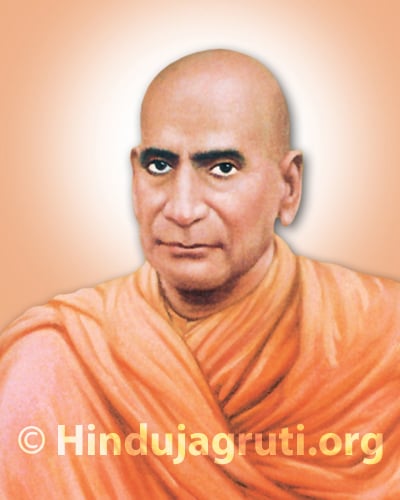Phalgun Krushnapaksha 5, Kaliyug Varsha 5116
Ghar wapsi critics ignore the fact that the Hindu population is diminishing. Unless former Hindus are brought back into the fold, the community will become a minority, especially if conversions to other faiths are to continue unabated
Scorn and condemnation is frequently poured on the ghar wapsi campaign—the Rashtriya Swayamsevak Sangh-Vishwa Hindu Parishad’s programme for re-admission into Hindu fold of people traduced to other faiths. It is being unwittingly equated with coercive/forcible conversions, reminding one of Muslim rule or conversion through allurements, that are done by Christian missionaries. The asymmetry of motives between ghar wapsi and the other two is lost. While conversion to Christianity or Islam is enjoined by their respective scriptures, re-conversion to Hinduism is a product of historical circumstances in response to demographic peril. It has largely been forgotten why and how Swami Shraddhanand of Arya Samaj instituted shuddhi nearly a century ago. It has been eloquently described by the Swami himself in Hindu Sangathan: Saviour of the Dying Race.
In February 1912, Swami Shraddhanand was in Kolkata. He was standing in the spacious hall of Kolkata Arya Samaj when a Bengali gentleman, named Colonel U Mukerji, of the Indian Military Services approached him. Colonel Mukerji’s Western attire had prejudiced the Swami but he soon made amends when the visitor broached an issue of immense concern. Colonel Mukerji said that he had been working on a pamphlet which mathematically established that Hindus would be wiped off the face of the earth within 420 years if remedial measures were not put in place.
Col Mukerji read from the Census of India, 1911 (Vol-1, P.122). It said: “In the whole of India the proportion of Hindus to the total population has fallen in 30 years from 74 to 69 percent, but this is partly due to inclusion at each succeeding Census of new areas in which Hindus, if they are found at all, are in minority”.
Taking five per cent to be the actual proportion of decline of the Hindus within 30 years, Col Mukerji said their present number of 69 per cent will be swallowed up in (14×30) 420 years, if no efforts were made to arrest the decline. By then, UN Mukerji had already, in 1909, published a brochure based on Census 1901 figures, titled Hindus, a Dying Race? But even a nationalist of eminence, like Sri Aurobindo, had downplayed its importance in a review in Karmayogin Weekly (November 6, 1909).

But Swami Shraddhanand gave it patient consideration. “For a full 13 years after that, I remained a mere student of statistics, but in the beginning of the year 1923 AD I threw myself heart and soul into movement of protection and progress of my people…”, he said. It was in February 1923 that he led a project for reconversion of Malkana Rajputs (whose forefathers were Hindus) living near Agra. For this purpose, the Bharatiya Hindu Shuddhi Sabha was formed.
The reconversion happened in the presence of thousands of guests from outside, who partook food prepared and distributed by the Malkanas. Swami Shraddhanand emphasised that the Hindus were also undergoing prayaschchit (purification) for keeping outside their fold such heroic and pure souls for centuries. Village after village was reclaimed. By the end of December 1928, thousands of neo-Muslims had embraced Hinduism.
Swami Shraddhanand’s project started much before the RSS was founded. It was rounded up when the Sangh was still in the incubator. But what must be noted is that it was over statistics, not scriptures, not ‘soul harvesting’. A worsening Hindu demography would lead to worsening security of Hindus. The religion-wise data of 1911 Census drove this point home for Swami Shraddhanand. A hundred years later, the situation is not very different. The ghar wapsi today is actuated by the same apprehensions. Ironically, the Government has not disclosed the religion-wise data of 2011 Census.
This writer had long since suspected that the ‘secular’ UPA Government had deliberately withheld publication of the 2011 Census because it had found steep increase in the Muslim demographic share at the cost of the Hindu population. The author tenaciously pursued the subject under the RTI Act. In the hearing before Mr Vijai Sharma, IAS (Retd), Information Commissioner on December 31, 2013, no representative from the Registrar General of India turned up bolstering the author’s suspicion that the Government had much to hide. However, to this author’s disappointment even the Information Commissioner, a Congress appointee, came out with a peculiar decision, helping concealment rather than disclosure. The decision No. CIC/SS/A/2013/001596/VS/05811 dated January 13, 2014 is available on CIC’s website.
The UPA had its compulsions to keep a lid on the religious demography. But the fear was political instead of civilisational. The UPA feared revelations about burgeoning Muslim demography would give the BJP a handle in the 2014 general election. The UPA lost the election anyway because it had lost the plot. Since then, it has been nine months since BJP-led government is in power. And yet the religion-wise data of the 2011 Census has only been partially released.
According to figures that have been made public, India’s Hindu population has fallen below 80 per cent for the first time since 1947, when the country was partitioned because Muslim-majority regions demanded to secede. Following Partition, Hindus (and Sikhs) were squeezed from their ancestral homes and Col Mukerji’s views were vindicated. The same demographic shift is occurring now.
Source : The Pioneer




